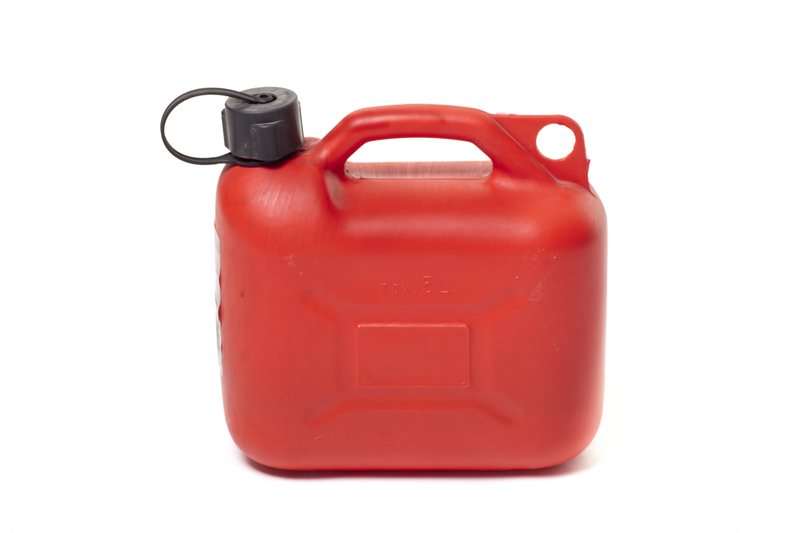The do's and don'ts of piano relocation and the wisdom of hiring experts
Posted on 26/05/2025
The Do's and Don'ts of Piano Relocation and the Wisdom of Hiring Experts
Moving a piano isn't just another part of the relocation checklist--it is one of the most delicate, challenging, and risky components of the entire process. Whether it's an upright, baby grand, or concert grand piano, these beautiful instruments blend artistry with engineering and require exceptional care during a move. In this comprehensive guide, we'll explore the critical do's and don'ts of piano relocation, uncover the unique challenges involved, and discuss why enlisting professional piano movers is often the safest and wisest decision for both your instrument and your peace of mind.

Understanding the Challenge of Piano Relocation
Pianos are not just heavy--they are also delicate and complex. An average upright piano can weigh between 300 and 500 pounds, while grands and baby grands can tip the scales at over 1,000 pounds. More importantly, every piano contains thousands of intricate moving parts, including strings, hammers, pedals, and keys. The combination of substantial weight, unusual shape, and fragile internal components makes safe piano transportation a task best approached with methodical planning or, ideally, with the help of experts.
Why is Piano Moving So Difficult?
- Weight Distribution: Unlike most furniture, a piano's weight is not evenly distributed; it is concentrated in key structural points.
- Fragile Components: Internal mechanisms, like the action or soundboard, can be easily knocked out of alignment or damaged by vibrations or shocks.
- Awkward Dimensions: Pianos are bulky and lack good handholds, making them tough to grip and maneuver through tight spaces.
- Update Value: Both financial and sentimental value necessitate extra caution to avoid costly repairs.
The Do's of Piano Relocation
Proper preparation and execution can make all the difference in moving your piano safely. Here are the top recommendations you should always follow:
1. Plan Every Step Thoroughly
- Measure doorways, stairwells, and hallways that your piano will pass through.
- Visualize the path from origin to destination, including transitions between floors, tight corners, and exterior obstacles.
- Clear out any obstacles in advance--remove rugs, furniture, and any potential trip hazards.
2. Gather the Right Equipment
- Heavy-duty moving straps and a sturdy piano dolly are essential.
- Use high-quality moving blankets and padding to protect finishes from dings or scratches.
- Think about gloves with a good grip and adequate support for your back and knees.
3. Disassemble When Necessary
- Remove protruding parts such as piano legs, pedals, and music stands to prevent breakage.
- Keep all screws and accessories organized and labeled for easy reassembly.
4. Secure the Lid and Keys
- Shut and lock the lid to prevent keys from shifting and detachable panels from falling off.
- If the lid does not lock, use gentle straps or padded ties to secure it.
5. Use Proper Lifting Techniques
- Lift with your legs, not your back, and maintain good posture to avoid injuries.
- Coordinate communication and timing among your team members to move as a single, controlled unit.
6. Protect the Environment
- Protect walls, floors, and doorframes with corner guards, floor runners, or mats, especially in narrow passageways.
7. Hire Professional Piano Movers
- This is arguably the most critical "do" of all. Professional piano movers possess experience, specialized equipment, and insurance coverage to handle your instrument with utmost care. They know the best practices for every model--upright or grand, vintage or new.
The Don'ts of Piano Relocation
Just as important as the things to do are the costly mistakes you should avoid when moving a piano:
1. Don't Move a Piano Alone
- Never attempt to move a piano solo--it's both extremely difficult and dangerous. Always work with a coordinated team, ideally of three or more people.
2. Don't Underestimate the Weight or Complexity
- Many people make the mistake of thinking a piano is just large furniture. Its mechanical complexity and bulk mean that routing, lifting, and placing require unique strategies.
3. Don't Tilt or Rotate the Piano Excessively
- Tilting a piano too far or rolling it on its side can cause serious internal damage, especially to the action and string tension. Always keep the instrument upright unless absolutely necessary (such as for a grand that is specifically designed to travel on its side using special skids).
4. Don't Use Inadequate Moving Gear
- Improvising with household furniture dollies, ropes, or blankets without proper padding can lead to scratches, dents, or even tipping hazards.
5. Don't Forget to Prepare the New Location
- Neglecting to measure entryways, staircases, or elevator capacities at the destination can cause last-minute panic and potential damage to the piano or surroundings.
6. Don't Expose the Piano to Temperature or Humidity Extremes
- Pianos are highly sensitive to climate fluctuations. Sudden exposure to hot, cold, or humid conditions during transit or at the new location can warp wooden components, damage tuning, and harm finishes.
7. Don't Leave the Piano Untuned After Moving
- Relocation can shift the soundboard and strings, so tuning the piano after it acclimates to its new home is necessary for continued optimal sound.
The Case for Professional Piano Movers
Now that we've reviewed the essentials, let's focus on the single most important factor: hiring experienced piano movers.
Why Should You Rely on Professional Piano Relocation Services?
- Specialized Expertise: Professional piano movers understand the nuances of various models, from uprights to grand concert pianos, and have encountered virtually every moving scenario.
- Advanced Equipment: They utilize piano skids, specialized dollies, heavy-duty straps, ramps, and even cranes, whereas general movers may lack access to these tools.
- Full Protection and Insurance: Reputable companies provide insurance that specifically covers expensive musical instruments, meaning your investment remains protected no matter what.
- Efficient Moving and Setup: Experts can disassemble, wrap, transport, and reassemble pianos swiftly and with minimal risk.
- Less Stress for You: Why risk injury or heartbreak? Professionals give you confidence and peace of mind, focusing on the instrument while you address other aspects of your move.
How Do Piano Moving Companies Work?
Piano movers start with a comprehensive assessment of both the instrument and the moving environment. They will measure access points, evaluate potential hazards, and select the right team size and tools. The piano is carefully disassembled (if necessary), padded, wrapped, and placed on custom skids or dollies. During transportation, movers maintain stability and temperature control where possible, and upon arrival, reassemble and position the piano to your exact preference. Many companies offer optional climate-controlled transport and short- or long-term storage.

Frequently Asked Questions About Piano Relocation
Q: Can a regular moving company handle my piano?
A: It's not recommended. General movers may lack the necessary training, equipment, and insurance for safe piano transport. Only hire movers with established piano-moving expertise.
Q: How much does it cost to hire professional piano movers?
A: Prices vary depending on piano type, size, moving distance, and complexity (stairs, tight spaces, difficult terrain). However, the cost is small compared to potential repair or replacement costs for damaged instruments.
Q: How soon should I tune my piano after a move?
A: Allow at least 2 weeks for the piano to acclimate to its new environment before tuning. This helps the wood and strings settle after transport-induced disturbances.
Q: Should grand pianos be moved differently than upright pianos?
A: Yes, grand pianos require different disassembly (removal of legs, pedals, and lyre) and transport methods, and should never be moved fully upright.
Final Thoughts: The Wisdom of Professional Piano Moving
While it is technically possible to relocate a piano with plenty of manpower and makeshift equipment, the risks--personal injury, severe instrument damage, and ruined finishes--are simply not worth it. The key to safely moving a piano lies not just in strength, but in experience, precision, and respect for the instrument's intricacies.
By following the do's and don'ts of piano relocation listed above, you can minimize the chances of mishaps. However, the most important step remains the same: trust your piano to qualified professionals. Their technical knowledge, appropriate equipment, and specialized care ensure your treasured piano arrives at its new home ready to fill the air with music--untouched, undamaged, and perfectly tuned.
Ready for your next move? Don't gamble with your grand piano. Choose the wisdom of hiring expert piano movers for true peace of mind and the long life of your beloved instrument.



